Last Updated on November 30, 2020 by Heather Hart, ACSM EP, CSCS
My guess is that many of you have been there: you visit a running specialty store to get fitted for a new pair of shoes. While explaining the ins and outs of the latest model of Brooks or Altras, the employee whips out a pair of aftermarket insoles and puts them into the shoes you are trying on. They briefly explain the benefits of these insoles, but you’re confused. Why do you need to spend another $50 (or more) on insoles for running shoes – shouldn’t your new shoes alone be sufficient?
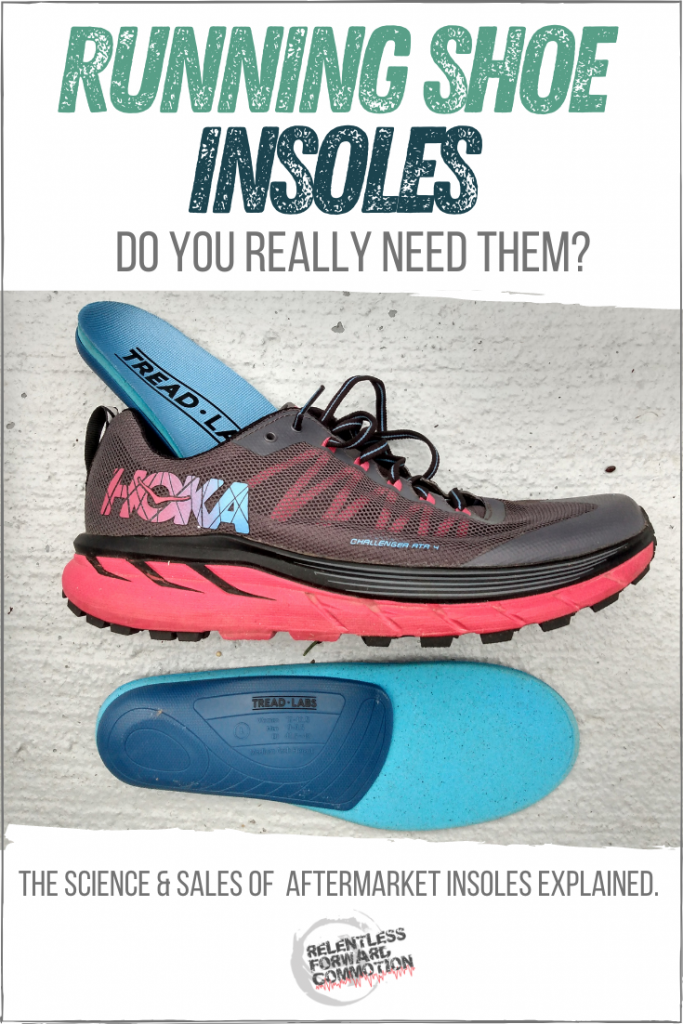
I’m going to start this post off with two very polarizing statements, for the sake of transparency:
1. Aftermarket insoles are most definitely, 100%, an “upsell” at a running specialty store. For just over a year, I worked for a popular running store chain. We were absolutely instructed to try and sell these insoles to everyone, whether they needed them or not. (Fun fact: I got in trouble for not upselling these enough. Because my background as an exercise physiologist let me know that no, not everyone needed them. I held my ground.) Insoles are beneficial for some people, absolutely. But do not be fooled: they are without a doubt, also an opportunity to make a larger profit on a customer. (Hey, it’s business, I get it.)
Note: I don’t believe all running stores are trying to sell you things you don’t’ need, don’t get me wrong. There are plenty of honest store honors and employees truly looking out for the wellbeing of their customers. I’m just pointing out, this upsell technique does indeed happen. Again, it’s sales. It’s the point.
2. I personally DO run with these types of insoles, and I have for over 3 years now. I’d say I use them for approximately 75% of my mileage, and love them. I first started using them when I had a chronic injury (posterior tibial tendonitis) that would not go away. It likely arose from the high mileage demands of ultra running, paired with my elongating, flexible arches. They were a game changer for me.
So that said, I’ve seen the good AND the bad side of aftermarket insoles for running shoes. And I’m here to break down the good and bad, so you can make your own informed decision as to whether or not they are right for you.
Insoles for Running Shoes: Explained
Before we get to the discussion as to whether or not you need insoles in your running shoes, let’s talk about what insoles are…and what they are not.
Types of Insoles
If you google “Insoles for Running Shoes” you’ll get thousands of results. You’ll see everything from the cushioned, gel like inserts that you can buy at the drug store, to much more structured (and much more expensive) running specific inserts. You’ll also note that they come with a wide variety of claims, and a wide variety of price tags.
In this post, we’re going to discuss the latter category. These running specific insoles are typically:
- rigid
- three dimensional
- designed to stabilize the foot
- designed to support abnormal movement of the foot
- reduce the movement of the arch
- typically cost between $40 – $70, and are available over the counter
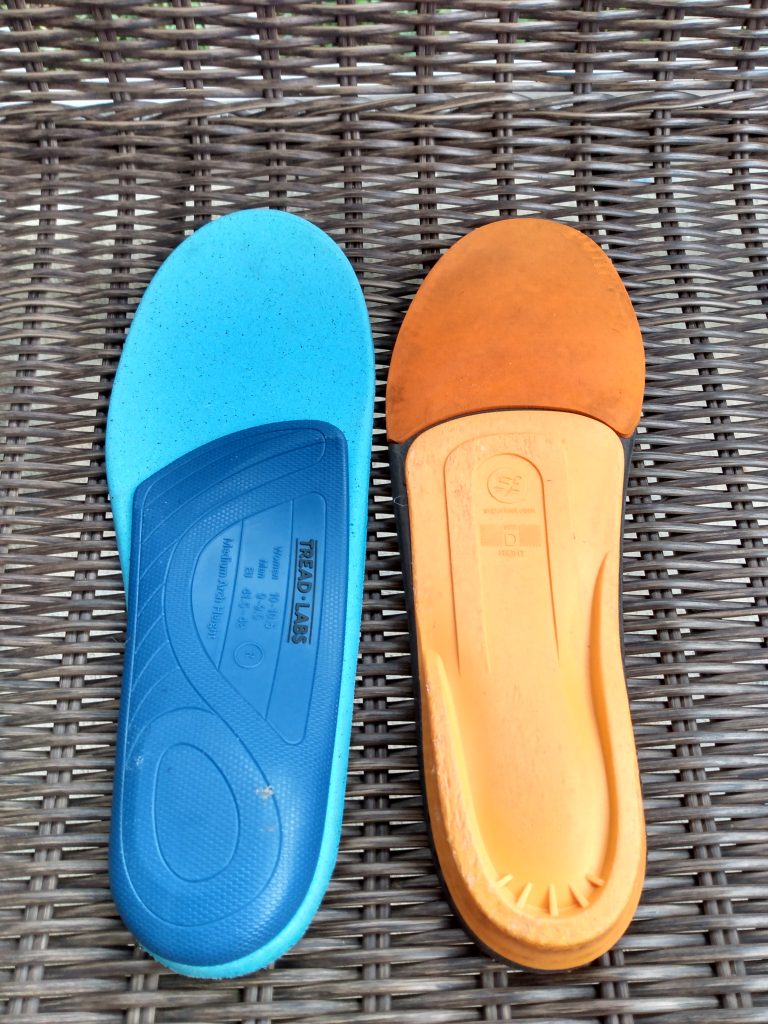
They come in various arch heights and cushion types. They are also available in full foot styles, or heel cup/arch only styles.
Sock Liners vs. Insoles
“But wait…doesn’t my shoe already come with an insole?” you may be thinking. No, but that’s a common misconception. When you purchase a brand new running shoe, you will find that they come with what is known as a “sock liner” in the shoe industry. This thin, slightly cushioned piece of fabric is placed into the shoe to essentially act as a buffer between your foot and the stitching on the inside of the shoe.
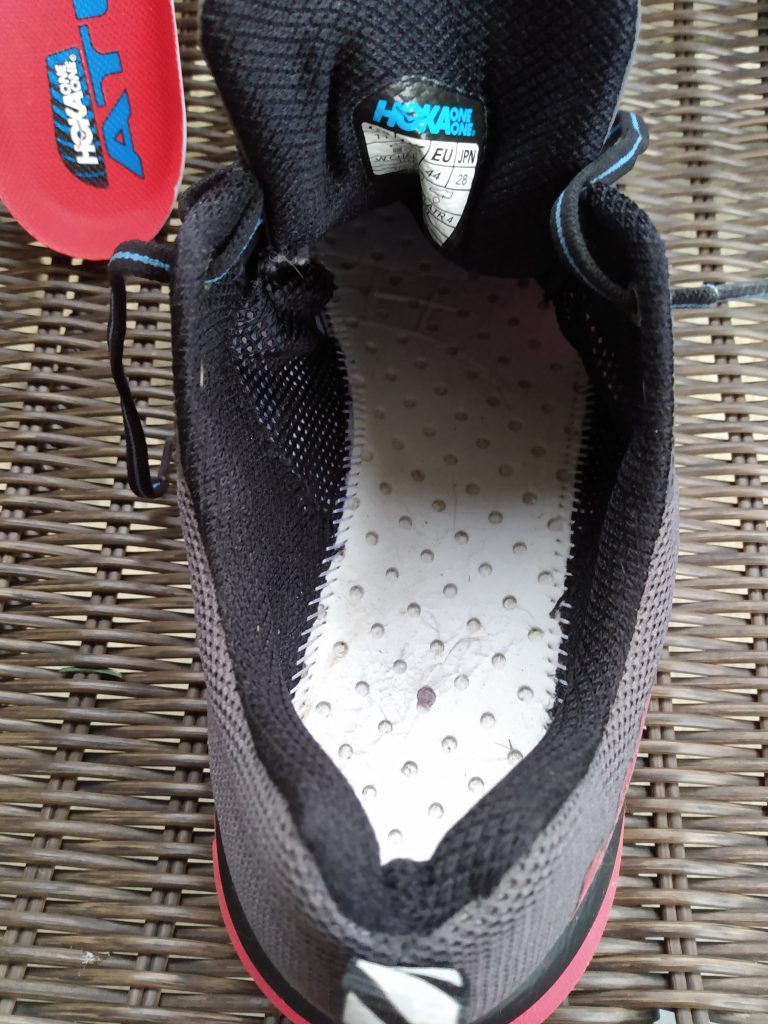
If you take a sock liner out, you will notice that the inside of your shoe is indeed flat. A common misconception is that the sock liner provides arch support. But one look inside the shoe will prove that’s not true. Any arch support in a stability shoe comes in the form of:
- a stability post within the medial side of the sole of the shoe (not typically visible to the naked eye)
- a very firm section of the “upper” of the shoe under the medial arch.
But the sock liner? It provides zero support, and rarely much cushion.
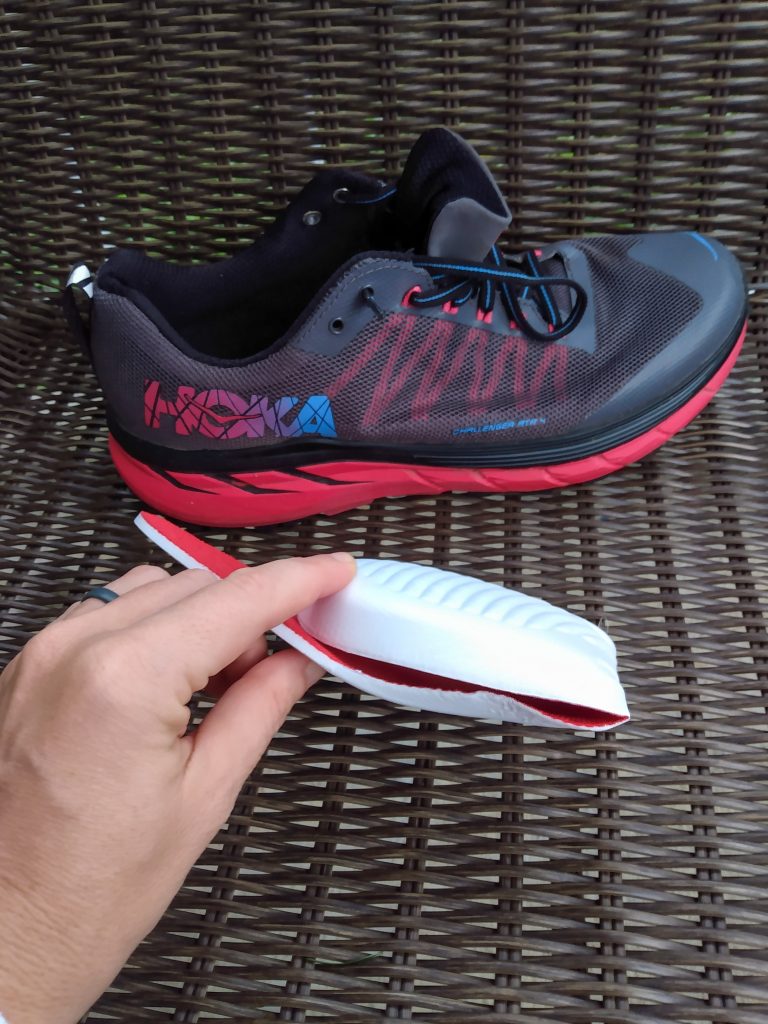
Insoles vs. Orthotics
On the complete opposite end of the spectrum, let’s compare insoles to orthotics. A custom orthotic is a prescribed medical device from a doctor. It is designed and molded by a professional to perfectly fit your foot, and to help alleviate specific issues you may be having with your feet. Orthotics are typically very rigid, much more so than an over the counter insole. They are also often very, very expensive (depending on what type of health insurance you have).
Do Runners Really Need Insoles?
So, what are these insoles supposed to do? Well like anything in the commercial world: claims vary wildly.
What Insoles CAN Do:
- Provide varying degrees of arch support, which can lessen the rate of overpronation
- Reduce pain associated with plantar faciitis (Lewis et al, 2015)
- Add cushion to your shoe to absorb impact, improving comfort
- Reduce forefoot pressure (Hähni, et al, 2016)
- Add height to your foot, if your shoe volume is too high and you are having fit issues.
What Insoles CANNOT Do:
While they may alleviate foot motion within your shoe, insoles cannot fix your running form or gait. If you are experiencing an injury in your feet that is due to a breakdown somewhere in the kinetic chain, insoles aren’t going to help.
If you are experiencing pain or discomfort due to improper training, or running high mileage that your body is not accustomed to, insoles will not help.
Claims that insoles in and of themselves will make you faster, more efficient, or anything else that sounds “too good to be true” are likely unfounded. There may be scientific evidence that certain shoe or insole types may provide a slight advantage in elite athletes, where fractions of seconds matter. But to us mere mortals, you are better off focusing on increasing overall fitness in order to become faster and more efficient.
Claims from running store employees saying that you NEED these insoles, even if you have experienced no issues before, are also unfounded. Do your research, and come back for them later if you like, but do not be pressured into buying insoles (unless, of course, they are comfortable and you want them).
Related post: 5 Running Shoe Mistakes You Could Be Making Right Now
Who Can Skip Insoles
If you are not currently experiencing any sort of foot pain or discomfort, you can skip the insoles.
Here’s another very important factor to keep in mind: overpronation is not inherently bad. In one research study, the foot position (foot inversion to eversion) was quantified for novice runners at the start of the experiment. Running injuries among participants were tracked for 1 year. The results showed that injury frequency among participants was lowest for those with a foot position between 7 and 10° pronated. This group had significantly less injuries than all other groups. This result shows that a pronated (everted) foot position is, if anything, an advantage with respect to running injuries. Consequently, it is difficult to find supporting evidence that foot pronation (eversion) is a strong predictor of running injuries. (Neilson et al, 2014)
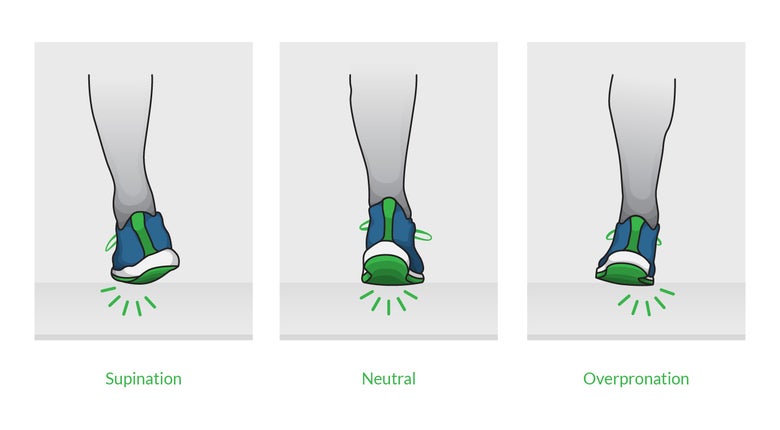
In other words, if you have flat feet, or are overpronating, but you are NOT experiencing any injuries or discomfort, do not let a running store employee (or otherwise) convince you that you need stability shoes and/or insoles.
Who Can (potentially) Benefit From Insoles
While there are no guarantees, runners with the following issues may benefit from wearing insoles:
- Those who blister due to foot movement within a shoe
- Those looking for arch support, either for comfort or overpronation
- Those who don’t need a full on stability shoe, but want a little extra support
- Those suffering from plantar faciitis
- Those looking for extra cushion
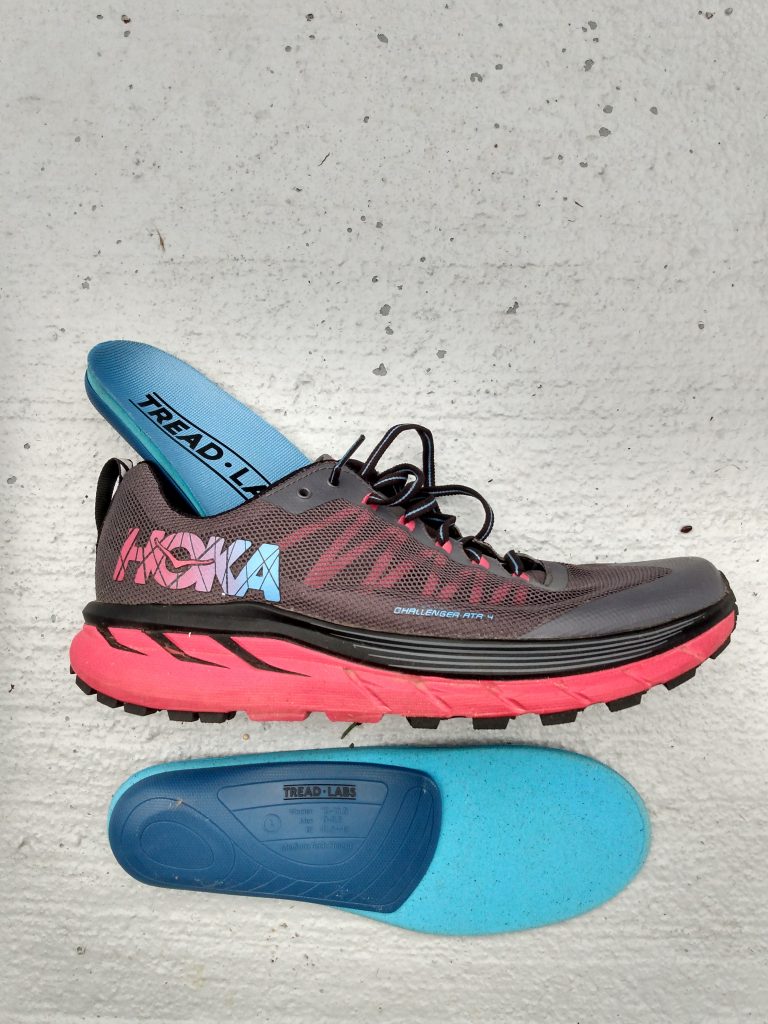
As mentioned at the beginning of this post, I am one who did suffer from discomfort associated with overpronation. When standing, I have a moderate arch, not traditionally “flat” feet. However, my arches are very flexible, and when I run, they do elongate, causing my foot to overpronate. That movement was causing chronic pain for my posterior tibial tendon. For me, an insert that slowed down and lessened the rate of pronation by supporting my arch, helped ease and eventually eliminate my pain.
Ultimately, Comfort Matters
There is a lot of science surrounding the idea of runner’s preferred movement path being the best movement path for that individual runner. In other words, the body is going to do what makes most sense for each individual body, and in most cases – that’s the correct path or form for that person. For that reason, we tend to gravitate towards what feels best with our preferred movement pattern.
Research shows that shoe conditions that are more comfortable are associated with a lower movement-related injury frequency than shoe conditions that are less comfortable. (Nigg et al, 2015). Further, shoe conditions that are comfortable are associated with less oxygen consumption than shoe conditions that are less comfortable (Luo et al, 2009)
Point being? If you are unsure if insoles are right for you, but they FEEL good, it most likely won’t hurt to give them a try.
What to Know About Using Insoles in Your Running Shoes
If you’ve decided to give insoles a try in your next pair of running shoes, here’s a few things to know:
Sizing
Insoles typically come in various shoe sizes, and often, arch sizes. Generally, they will come in a size range, and will need to be trimmed to fit in your shoe.
Pro tip: when trimming your insoles, leave some space (about 1-2 mm, or the depth of a coin) between the end of your insole and the tip of your shoe. This will leave enough space for the necessary, natural movement of the insole with each step.
Sport or “Need” Specific
There are various models of insoles based on your specific needs. Some are designed for comfort, while others are designed for pain management. Some have a lower profile to fit in a racing flat, while others are thicker to withstand the needs of longer distances. Not all insoles are created equal, so definitely refer to the packaging and discuss your specific needs with a running store employee, if you choose to purchase insoles.
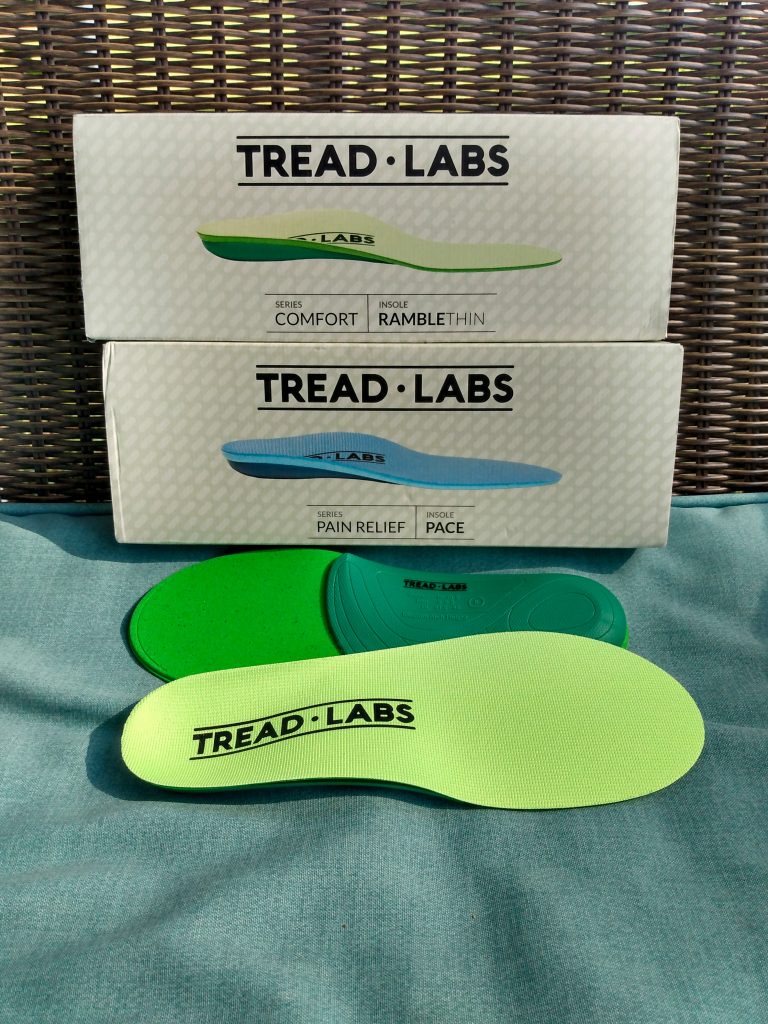
You Can Move Them Between Shoes
You can absolutely move your insoles between shoes, if you want to. I’ll move mine between my road and trail shoes, depending on which pair I reach for based on my run.
Insoles Last A Long Time
Varying brands of insoles have varying life expectancies and guarantees. Typically, I find I can get at least 1,000 miles or more (about the lifetime of 2-3 pairs of shoes) before I feel them breaking down to the point of needing to be replaced. It definitely makes the $50+ cost easier to swallow.
Recently, I’ve switched from Superfeet to Tread-Labs which claim they have a “million mile” guarantee – the molded plastic arches are guaranteed for life. The top, cushioned layer easily Velcro’s on and off and can be replaced for only $15, versus $65 for the entire pair of insoles.
Start Slow
Just like a new style of shoes, you may experience discomfort if you try to run too many miles, too soon, in a new pair of insoles. Start with shorter runs until your feet become used to the insoles, and gradually build up your mileage from there.
Final Thoughts on Insoles for Running Shoes:
I hope this post has helped you understand what the benefits of insoles for running shoes are, and also helped you understand that not every runner necessarily NEEDS them. As mentioned above, if you they feel good on your feet, and you have the extra money to spare? It certainly can’t hurt to give them a try. But understand that insoles are simply another tool in a runner’s toolbox. They are not a substitute for proper training, or if you are experiencing pain, a substitute for a diagnosis and plan of action from a medical professional.
Heather Hart is an ACSM certified Exercise Physiologist, NSCA Certified Strength and Conditioning Specialist (CSCS), UESCA certified Ultrarunning Coach, RRCA certified Running Coach, co-founder of Hart Strength and Endurance Coaching, and creator of this site, Relentless Forward Commotion. She is a mom of two teen boys, and has been running and racing distances of 5K to 100+ miles for over a decade. Heather has been writing and encouraging others to find a love for fitness and movement since 2009.

Chris
Thank you!
Heather Hart, ACSM EP-C
You are welcome!
Cameron
My brooks ghost 15s are great but I have a little to much room in them width wise…I need a little more snug fit to just feel more stable. Any idea on a decent inexpensive insole to just add a little more volume I the shoe, any advice would be appreciated!
Tom S
I don’t see how they add cushion. I bought a pair of powerstep insoles which have a rigid plastic material at the heel. These reduce cushioning greatly.
With a normal insole, no hard plastic, the heel compresses the midsole. The rigid plastic spreads out the weight over a larger area which causes the midsole to compress less. The rigid plastic causes the midsole to feel several times harder than they actually are.
Heather Hart, ACSM EP-C
Hi Tom, thanks for your comment! It certainly will vary from one insole brand and model to another. The models of Superfeet and Treadlabs I use have a layer of thick foam that adds cushion to the forefoot of my shoe. I am not familiar with Powerstep insoles.
Paul C Czaplicki
Dear Ms. Hart,
Thank you for writing this article as I have used insoles in the past and was unsure if I really needed them.
Your article doesn’t mention runners who supinate. I have a high arch and supinate so I am unsure if I need an insole to provide additional arch support. Confirm I should use your rule that if I am not experincing any discomfort or pain, I should not use insoles.
Heather Hart, ACSM EP-C
Hi Paul! This is a great question!
Confirming rule #1: if you aren’t experiencing any discomfort or pain, there is NO need to change anything, and that includes adding insoles. More specifically to your point of supinating: supination occurs when a runner lands midfoot and rolls laterally, pushing off of the outside of your foot. In this case, there’s not only no need to add “extra” support to the arch (because depending on the severity of supination, the arch may not be moving much at all), but further an insert providing arch support may actually push you further into supination.
Of course, this is going to vary from runner to runner. But if you aren’t having issues with your feet or running gait, I wouldn’t worry about adding insoles!
Brian
Thanks You – So nice and refreshing to read an unbiased and informative review.
Heather Hart, ACSM EP
You are welcome, Brian! Thank you for reading!
Jen
Great article! Thank you! I am experiencing posterior tibial tendonitis, and am trying to look for insoles to support my walking until the tenderness subside. How do I know if the insoles fit right in the shoes (discomfort from needing to break in vs misfit?). When I put that insoles into another pair of shoes that are the same size, they felt different.
Erik
Should you keep the sock liner in when adding aftermarket insoles, or take the liner out first?
Heather Hart, ACSM EP
I take them out! Keeping the sock liner in will definitely affect the overall fit/tightness of the shoe, so it’s certainly personal preference.
Katharine
Dear Heather Hart,
Today I experienced the insole selling points you described in your article. I went into a Fleet Feet to purchase a pair of shoes for trail bicycle riding,, for example Greenway bike riding. I do not use bicycle clips. I’ve never had any issues with wearing any brand athletic shoes. My last three pair were New Balance. Today, I purchased Brooks Ghost 14 & a $50 pair of insoles.
My questions: Since, I don’t have any issues with my feet, I purchased the insoles unnecessarily, correct? Or do insoles serve as preventative for future issues?
Thank you!
Katharine
Heather Hart, ACSM EP, CSCS
Hi Katharine!
I can’t say specifically that you purchased them “unnecessarily”, as I’m not sure the exact reason why the sales person recommended that you purchase them. It really boils down to individual needs. No, insoles are not preventative as far as biomechanics issues, but may provide comfort or relief if you do have issues already.
I will say that the franchise you mentioned is notorious for teaching their employees to upsell insoles. However, that doesn’t mean they are entirely unnecessary, you may still find them to provide extra comfort.
For what it’s worth, I DO enjoy my insoles, so if you are on the fence, give them a try! You may find you enjoy yours too. But if you don’t like them, then keep that in mind in the future if a running shoe store tries to sell you another pair. Not everyone NEEDS aftermarket insoles.
I hope that helps answer your question!
– Heather
Landy
Thank you for this article! I went looking because I just purchased a pair of the Hoka Bondi 8 at a popular running shoe store and was sold a Superfeet insole (which I did wear many years ago when I trained for an annual charity walk a few years). I haven’t worn them yet because it was all so pricey. I will say that it’s hard to find my large size, and that I do like finding a women’s shoe more than having to move to a men’s size. My feet are EXTREMELY flat and I have knee and hip pain from past sports. In any case, this was the first article that felt balanced to me to help me feel okay about either returning them or keeping them. I have wondered if I could put the insole into a much more affordable shoe and still reap the benefits of it while saving myself $100! Does the insole help me to purchase a more affordable shoe?
Silouan
Super easy to understand and well thought out report. Your experience in the business really qualifies your points. I find paying up to $300 just for the shoes not made in North America any more is hard enough for a guy that remembers wearing Mizuno Wave Riders and NB 990s ;-). Thank you for helping to sort out the questions for an old guy getting back to the trails.